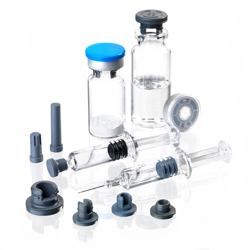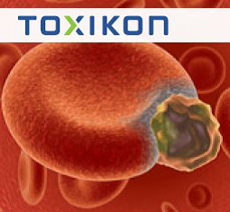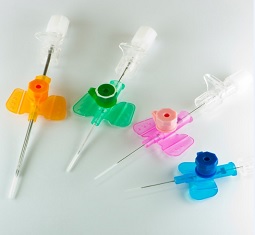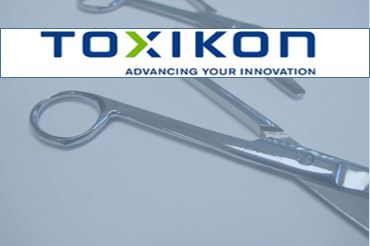Toxicological Risk Assessment (TRA) has been an important tool in the safety assessment of biomedical device, providing a chemical-based approach which complements a traditional animal-based testing program. The need for TRA is growing and in some cases, will be considered as a means of circumventing animal testing in the safety evaluation of devices.
TRA is founded on the notion that, if all constituents of a product are known, then the safety (or risk) of a product can be assessed based on the toxicology of those constituents. The basis of the TRA under ISO 10993-17 and other guidelines pertaining to medical devices is typically an Extractable/Leachable (E/L) analysis of the medical device under study. The objective of the E/L analysis is to identify and quantify all substances that may be released from the test article during clinical use and in practical terms, is comprised of incubations of the test article in various media, e.g., water, ethanol, or hexane, at specific temperatures and durations. This approach can represent a substantial advancement in the risk assessment of solid materials, where the bulk concentration of its constituents offers very poor information on the potential exposure to users.
However, the E/L analysis can face several pitfalls towards achieving the objectives of risk assessment and current regulatory guidance leaves the analyst having to make many choices based on their own judgment. Based on current guidelines, a device that makes only brief patient contact is certainly classified differently than a device that is a permanent implant; however, often the E/L analysis for both uses nearly the same approach.
This webinar will discuss the collection of E/L data that are useful and relevant to risk assessment. Designing an E/L analysis requires one to consider not only the nature of the device and its constituent materials, but also the consumer/patient exposure, including the duration of expected exposure. One of the greatest uncertainties currently plaguing the risk assessment of medical devices is in the use of data from a single extraction (24-72 hours) and the (forced) assumption that the leaching of each analyte will (or will not) continue for the duration of the exposure period. However, this shortcoming of the data can be avoided with proper study design. Other potential pitfalls in the E/L analysis and the use of these data in risk assessment will be described, with the most important points being highlighted with several case studies. Participants will learn to recognize the most common pitfalls in E/L analysis as used in risk assessment and learn to avoid them.
Speaker

Kevin Connor, Ph.D., DABT, Study Director, ToxSMART
Kevin Connor, Ph.D., DABT, is a Study Director with the biocompatibility testing group and a Senior Toxicologist with ToxSMART, Toxikon’s consulting practice, specializing in chemical-based toxicological risk assessments. He has nearly 20 years of professional experience in toxicology and human health risk assessment within a variety of regulatory frameworks. Dr. Connor has assisted companies with the requirements of programs such as REACH and the High Production Volume (HPV) Challenge, and voluntary programs aimed at prioritizing the hazards for complex lists of ingredients. He has conducted numerous risk assessments for medical devices and consumer products, including assessments under ISO 10993-17 and those prompted by California’s Safe Drinking Water and Toxics Enforcement Act (Proposition 65). At Toxikon, Dr. Connor works closely with the analytical labs in procuring the most relevant data from Extractability/Leachability (E/L) analyses, and works with sponsors to develop methods that carefully consider the nature of consumer exposure.
Who Should Attend?
Senior level executives involved in regulatory affairs for medical device companies, including those from manufacturing services providers, consulting companies, product development, and financial/investment companies and government.
Relevant job functions include:
- Engineering – Biomedical, Design, Manufacturing/Production, Packaging, Process, Project, Quality, R&D
- Manufacturing (Packaging, Process)
- Project Management
- Research & Development
- Regulatory / Compliance / Quality Assurance
- Sales / Business Development / Marketing
- Purchasing
The session will also benefit pharmaceutical, biotechnology and dental product manufacturers.
Xtalks Partner
Toxikon
Toxikon is a preclinical Contract Research Organization (CRO). Located in a state-of- the art laboratory facility in Bedford, Massachusetts, and a second European lab operation in Leuven, Belgium. We contract and partner with biotech, Pharmaceutical and medical device industries to deliver exceptional product development services from concept to final product. Our professional and scientific staff is experienced in a comprehensive range of compound structures, therapeutic agents, and medical devices, including combinations products. We serve over 1,500 customers in more than 41 countries.
Media Partner
PharmaCompass
PharmaCompass is the one-stop, Pharmaceutical information platform developed for professionals to make your strategic business decisions. It’s your free-access, integrated global database with detailed regulatory information on products and companies. The PharmaCompass’ team directly connects buyers to the right contacts at the suppliers without getting involved in commercial transactions.
Save time & Send less emails// Find the right connections// Grow Your Pharma Business Digitally// [email protected]
You Must Login To Register for this Free Webinar
Already have an account? LOGIN HERE. If you don’t have an account you need to create a free account.
Create Account






